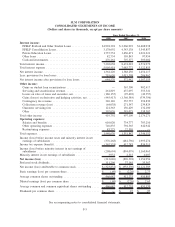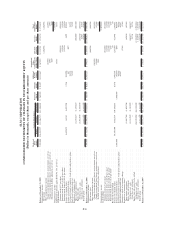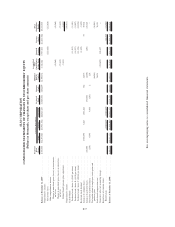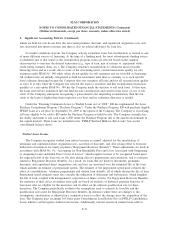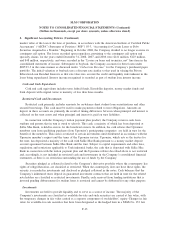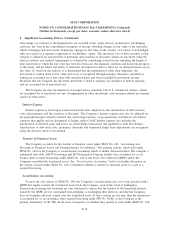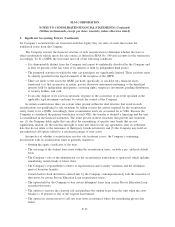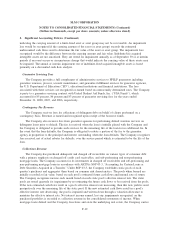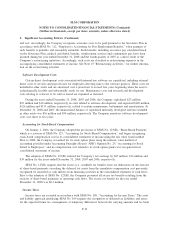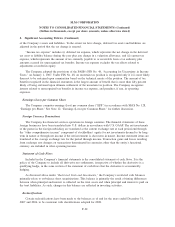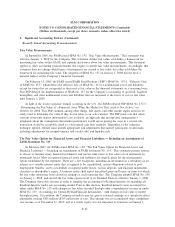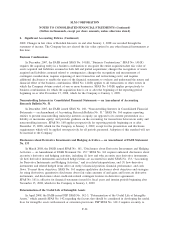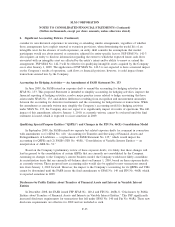Sallie Mae 2008 Annual Report Download - page 135
Download and view the complete annual report
Please find page 135 of the 2008 Sallie Mae annual report below. You can navigate through the pages in the report by either clicking on the pages listed below, or by using the keyword search tool below to find specific information within the annual report.2. Significant Accounting Policies (Continued)
the Company’s securitizations are structured such that legally they are sales of assets that isolate the
transferred assets from the Company.
The Company assesses the financial structure of each securitization to determine whether the trust or
other securitization vehicle meets the sale criteria as defined in SFAS No. 140 and accounts for the transaction
accordingly. To be a QSPE, the trust must meet all of the following conditions:
• It is demonstrably distinct from the Company and cannot be unilaterally dissolved by the Company and
at least 10 percent of the fair value of its interests is held by independent third parties.
• The permitted activities in which the trust can participate are significantly limited. These activities must
be entirely specified in the legal documents at the inception of the QSPE.
• There are limits to the assets the QSPE can hold; specifically, it can hold only financial assets
transferred to it that are passive in nature, passive derivative instruments pertaining to the beneficial
interests held by independent third parties, servicing rights, temporary investments pending distribution
to security holders, and cash.
• It can only dispose of its assets in automatic response to the occurrence of an event specified in the
applicable legal documents and must be outside the control of the Company.
In certain securitizations there are certain terms present within the deal structure that result in such
securitizations not qualifying for sale treatment by failing to meet the criteria required for the securitization
entity (trust) to be a QSPE. Accordingly, these securitization trusts are accounted for as VIEs. Because the
Company is considered the primary beneficiary in such VIEs, the transfer is deemed a financing and the trust
is consolidated in the financial statements. The terms present in these structures that prevent sale treatment
are: (1) the Company holds rights that can affect the remarketing of specific trust bonds that are not
significantly limited, (2) the trust has the right to enter into interest rate cap agreements after its settlement
date that do not relate to the reissuance of third-party beneficial interests and (3) the Company may hold an
unconditional call option related to a certain percentage of trust assets.
Irrespective of whether a securitization receives sale treatment or not, the Company’s continuing
involvement with its securitization trusts is generally limited to:
• Owning the equity certificates of the trust.
• The servicing of the student loan assets within the securitization trusts, on both a pre- and post-default
basis.
• The Company’s role as the administrator for the securitization transactions it sponsored, which includes
remarketing certain bonds at future dates.
• The Company’s responsibilities relative to representation and warranty violations and the reimburse-
ment of borrower benefits.
• Certain back-to-back derivatives entered into by the Company contemporaneously with the execution of
derivatives by certain Private Education Loan securitization trusts.
• The option held by the Company to buy certain delinquent loans from certain Private Education Loan
securitization trusts.
• The option to exercise the clean-up call and purchase the student loans from the trust when the asset
balance is 10 percent or less of the original loan balance.
• The option (in certain trusts) to call rate reset notes in instances where the remarketing process has
failed.
F-15
SLM CORPORATION
NOTES TO CONSOLIDATED FINANCIAL STATEMENTS (Continued)
(Dollars in thousands, except per share amounts, unless otherwise stated)


